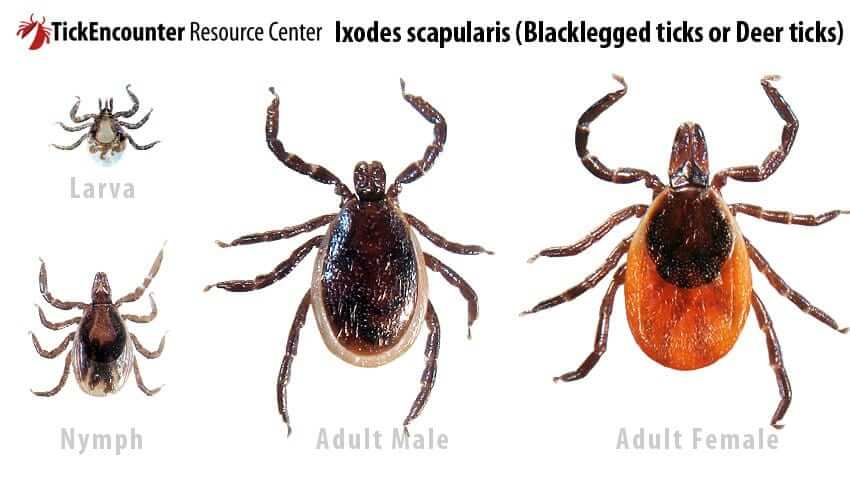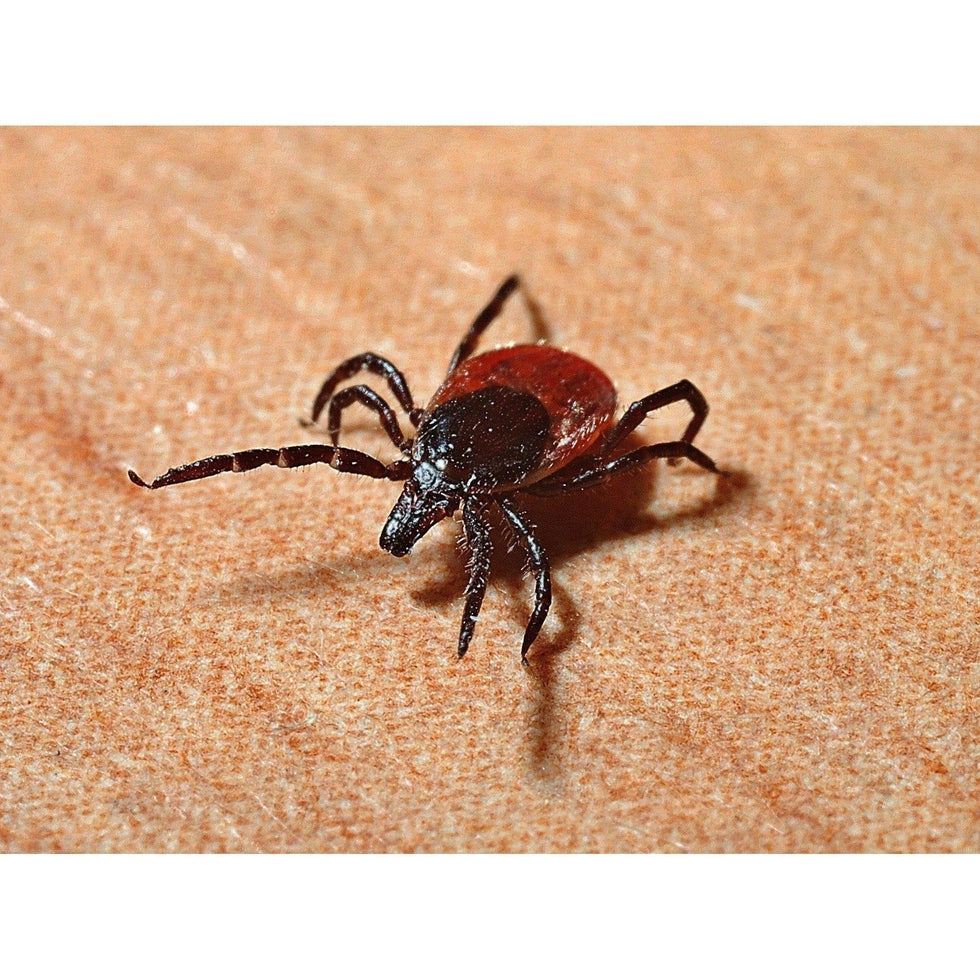Check
Lyme disease is found in blacklegged or deer ticks, which can be the size of a poppy seed. Ticks’ favorite places are in the scalp, armpits, and groin area, and behind the ears. Ticks can attach anywhere on your body, but these are the major places to check.
Ticks come in a variety of shapes and sizes – it’s important to know what they look like. Photo Credit: Tick Encounter Resource Center
Stay Calm
If you do find a tick, don’t panic. Getting anxious will only make you stress out more, and it will make it more difficult to focus on what you need to do next.Tweezers
Using tweezers, gently and carefully reach underneath the head of the tick to pull out the entire bug. The mouth of the tick is attached deep inside the skin, and it is important to remove the entire tick. If you only tweeze the tick’s body, it will release all of its stomach contents underneath your skin, giving you a higher chance of contracting an infection from the tick.
Identify what kind of tick you may have found. Photo Credit: Tick Encounter Resource Center
Resources
After removing the tick, look at a map to see the prevalence of Lyme disease in your area. Some regions have higher rates of the illness than others, so you want to have an idea of your risk. If you live in a higher-risk area, then it is important to visit your doctor. If you live in a lower-risk area, you can choose to trust that it wasn’t an infected tick or you can go to your doctor anyway.Freeze the Tick
Package the tick in a plastic freezer bag and save the tick so a lab can use Lyme tests against it. There are also online resources (like the Tick Encounter Resource Center) where you can send a picture of the tick. Scientists there will identify the kind of tick to tell you your chances of Lyme disease.
Recognize ticks on the spot! Photo Credit: Tick Encounter Resource Center

